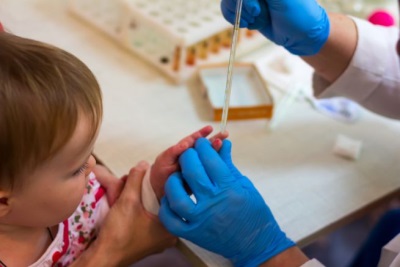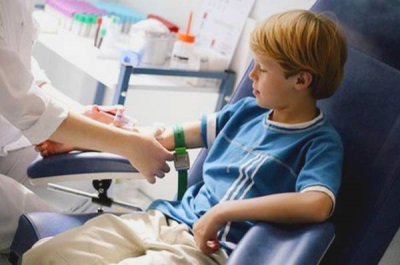Blood test in children with mononucleosis
A disease such as infectious mononucleosis is often found in children. It is caused by a herpes group virus named after Epstein-Barr virus that scientists discovered. And so the second name for this disease is VEB infection.
The disease is transmitted from a sick child to a healthy one through direct contact and by airborne droplets. Its incubation period is quite long and can reach several months, and the first manifestations will be fever, sore throat, swollen lymph nodes, weakness and nasal congestion.
To confirm the diagnosis, a complete blood count should be taken, because its changes in mononucleosis are specific, that is, they make sure that Epstein-Barr virus is present in the children's body.
Decoding of the complete blood count in infectious mononucleosis
If the child has such an infection, then the blood test results will change like this:
- The total number of leukocytes will increase (this is called leukocytosis).
- The percentage of monocytes and lymphocytes in the leukogram will increase.
- At the first stage of the disease can be detected neutrophilia.
- Atypical mononuclear cells will be determined. This is the name of oval or round mononuclear cells, which resemble monocytes and lymphocytes in structure, but have some structural differences. Normally, such cells are absent in the blood test or may be in children in the range of 0-1%. Their percentage increases with various viral diseases, tumors and some other pathologies, but at the same time it is less than 10%. If the level of atypical mononuclear cells exceeds the threshold of 10%, this confirms the presence of infectious mononucleosis in the child.
- ESR will be moderately increased.
- If the course of the disease is not complicated, the number of platelets and red blood cells will remain normal. At occurrence of complications their decrease will be marked.
What other tests should be taken
To clarify the diagnosis and determine the presence of complications of the child will be sent to:
- Monospot test. Such an analysis helps to identify the disease at an early stage and consists in combining the child’s blood with special reagents, as a result of which, during EBV infection, the blood cells are glued together and they precipitate.
- Antibody test. Such a study to determine the specific immunoglobulins that are produced in the child’s body upon contact with the Epstein-Barr virus.
- Biochemical examination of blood. In such an analysis, the liver enzymes and the level of bilirubin will be increased with liver damage.
How many times to take a complete blood count
A child with infectious mononucleosis is carried out with several blood tests, since the indicators may differ at different stages of the disease. For example, the presence in the analysis of atypical mononuclear cells may not be detected in the first weeks of the disease. In addition, in the course of treatment, a pediatrician will need an analysis result to identify complications, and after the acute phase, a clinical blood test will show how the recovery process is going.














